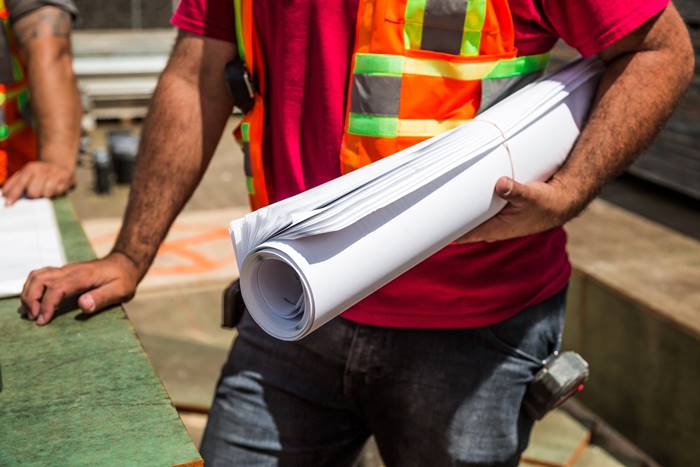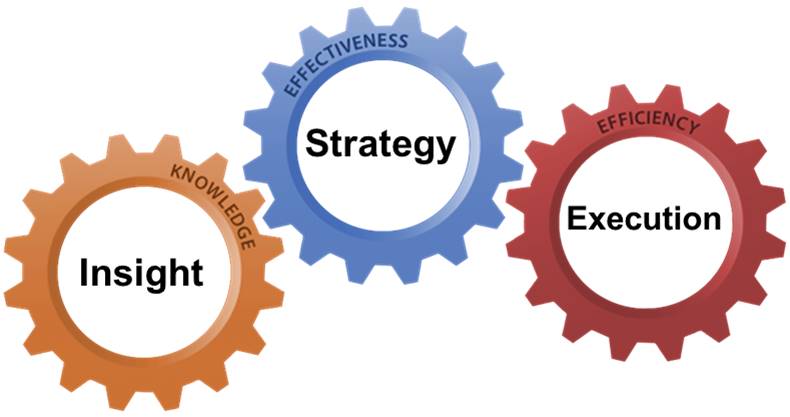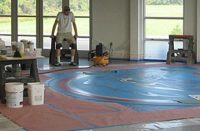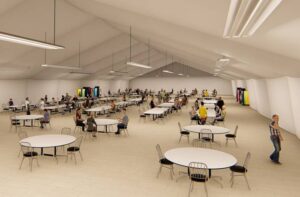
Needless to say, 2020 is a tough year. The pandemic has a hold on the economy, nonresidential projects are postponed or canceled, and it’s safe to say COVID-19 has changed construction and it doesn’t look like it will go away anytime soon. It’s anyone’s guess if our elected officials will be able to coordinate a response without damaging the economy further.
At this juncture, some contractors are wringing their hands and moaning. Others are more forward-looking, adapting to the current situation as a new normal. They do two things: step on the brakes and the accelerator at the same time. It sounds like a contradiction, but here is why it works.
Hit the brakes …
With projects few and far between, a contractor must first and foremost focus on survival. This means really controlling costs and maintaining at least some level of cash flow.
Letting employees go is a quick way to save money, but it also means a loss of experience and trust. It may not be so easy to find good people when demand picks up again. Better to use the loans and credits made available as a pandemic response and keep skilled workers on.
Cutting cost can be less painful when thinking outside the box. An excellent place to save is on inventory, by keeping the smallest possible stock of tooling, dyes, chemicals and other consumables. Good supplier partners will help with quick replenishment — it’s in their best interest to help their customers.
When polishing a floor, it’s easy to compare tool pricing. However, this can be very misleading. It’s better to consider cost per square foot, as the lowest-priced tools may not be lowest-total cost if they glaze over or quickly wear out.
Another productivity-enhancing initiative can be to use remote-control grinders. This allows the operator to kick vacuum hoses and do other small tasks while running the machine, thus saving on labor. On the equipment side, it can make good sense to rent rather than buy. It’s also a great way to handle any peaks in demand.
Brake … and then pivot
Many companies have seen their business suffer greatly during the pandemic. Luckily, with quick decision-making and short lines of command, small and mid-sized businesses have an easier time pivoting than do the billion-dollar giants. It’s easier to turn around a speedboat than an oil tanker.
Recent pivot examples in different industries are office furniture manufacturers promoting desktop and floor partitions to make office environments safer or HVAC suppliers focusing on high-efficiency replacement filters rather than new installations. Commercial cleaning companies facing a drop-off in demand when people work from home now offer deep-cleaning contracts instead.
To help with pivoting, one can use a planning framework like The Growth Gears. A system developed based on research at the University of Texas, it features how the three gears — Insight, Strategy and Execution — work together to help a company speed up.

How can a stepwise, systematic approach work? Let’s take a look, starting with insights.
Insight
Nonresidential construction activity is down, but there are some signs of life in parts of the country. With limited new construction, there’s some uptick in remodeling and renovation, and at least a chance of polished and decorative concrete work out there.
A few observations can be made around COVID-19 and contractors. Construction personnel are considered essential workers in many jurisdictions, and can operate more or less as usual. Concrete polishers are used to working with PPE, including face masks and ventilators, since they are exposed to silica dust. The same masks are also effective against airborne pathogens, which is an advantage to help keep employees healthy and productive.
Also, if you are a contractor and already thinking in terms of optimizing your business for a new normal, you already have a leg up on competitors trying to hibernate. This makes for a good starting point in looking at strategic opportunities.
Strategy
Customers and potential customers are reacting to the pandemic, some of which create new opportunities. Commercial buildings are reconfiguring spaces, and carpeting is being ripped out to be replaced with hard floors that are easier to clean. We see this not only in office buildings, but also in restaurants and hotels where guest rooms, conference spaces and corridors are being refurbished for easier cleaning.
From coast to coast another potentially large opportunity is outdoors, which is becoming more important for socializing and dining. Imagine hotels and restaurants creating and extending more permanent patios. What a great opportunity for decorative concrete!
Although jobs are smaller, there are also new opportunities in residential. People are not only spending more time at home working remotely, but they are also “staycationing” rather than traveling during their leisure time. Because of this, swimming pool companies are doing brisk business. What is preventing decorative concrete contractors from teaming up with them and inspiring homeowners to improve patios and backyards for outdoor living?
Although not a result of the pandemic, the environmental benefits of polished concrete can be better communicated. Nobody likes mold and other allergens present in tile and carpeting. Polished concrete floors also contribute to making retrofit buildings LEED compliant. This is a valuable sales pitch to owners and project GCs.
Execution
With new insights and strategy options, the important step is to formulate tactics and metrics for success.
Ramped up sales activities should target architects and engineering firms. Starting with existing contacts, new leads can be found through trade associations and lead services like Dodge or CMD Insight.
Make a list of targets and call them. It’s easier to reach people now when many are working from home. A successful pitch should leverage contractor skill, experience and workmanship.
Since trade shows and events are being canceled or postponed, marketing activities have to go digital. Thinking ahead, it’s not difficult to create valuable online assets like video or on-the-job reports. When done in a problem/solution/result format, case studies are great marketing tools.
The best way to reach prospects through the information noise is with email campaigns. It’s a good idea to invest in some email marketing automation and drip-feed prospects to stay top of mind when they are ready to talk.
What gets measured gets done, so setting a few goals makes follow-up more effective. For example, contractors can measure sales to new customers, record the number of phone calls made per week, and keep track of the opening rate for email campaigns.
In conclusion, contractors should be entrepreneurs who aren’t afraid to pivot or change direction when needed. Using a systematic approach makes this process easier and well-formulated goals will help keep the pivot on track.















